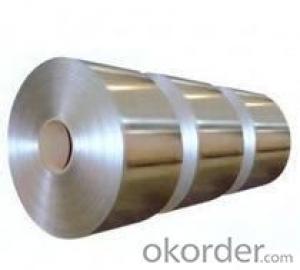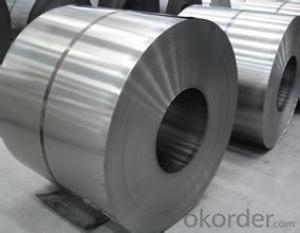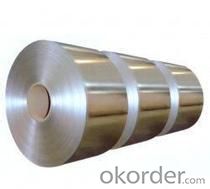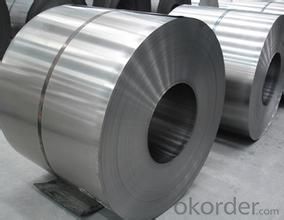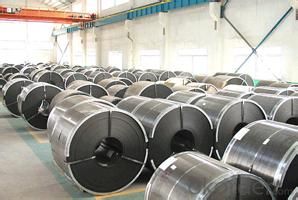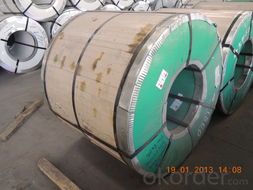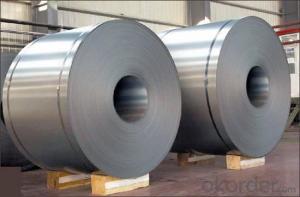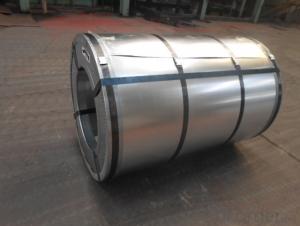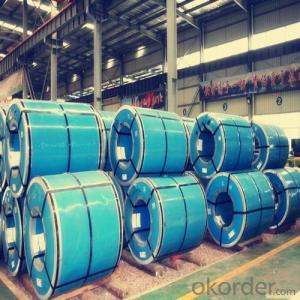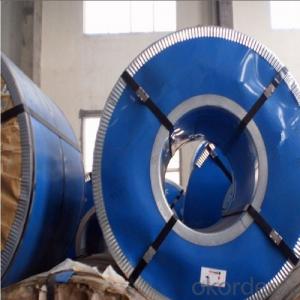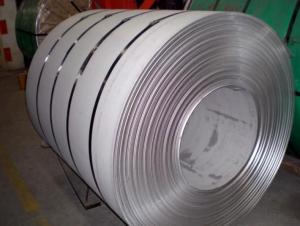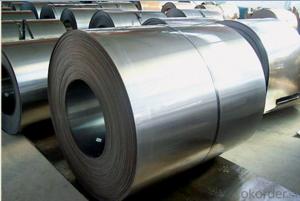excenllent cold rolled steel coil in good Quality
- Loading Port:
- Tianjin
- Payment Terms:
- TT OR LC
- Min Order Qty:
- 30 m.t.
- Supply Capability:
- 5000000 m.t./month
OKorder Service Pledge
OKorder Financial Service
You Might Also Like
Specification
The raw material of cold rolled steel coil/sheet is high quality hot rolled product, and after pickling, kinds of new technology and new process of global cold rolling production have been applied. Therefore the manufacturing, home appliance, automobile etc.
COLD ROLLED STEEL | |
Thicknenss | 0.10mm-4.00mm |
Width | 600mm-2000mm |
Sheets length | 1200-6000mm |
Coil inner diameter | 508-610mm |
Surface treatement | matt finish/bright finish,oiling/dry, bright anneal/black anneal |
Coil weight | 3-5t |
Package & Delivery
Package details: Standardseaworthy packing for international delivery.
Delivery: According to theexact quantity of your order.
Quality of the goods could be guaranteed. The finished product has a variety of excellent capabilities, such as continuous rolling, degreasing, annealing, skin pass, slitting and cut to length line etc. Along with it many rocessing capability and smooth, flat surface. It’s widely used in outdoor and interior decoration, furnishing.
Cold rolled steel is widely used in electronic production,Motorbike,Automobile,Stamping structure;Cold bent Sreel;Saw flake and etc;which is a good substitute for cold Roller and Cold plate in many field.
- Q: How do steel coils contribute to sustainability efforts?
- Steel coils contribute to sustainability efforts in several ways. Firstly, steel coils are made from recycled steel, reducing the need for virgin raw materials and minimizing the environmental impact of mining and processing. Additionally, steel coils are highly durable and long-lasting, meaning that products made using steel coils have a longer lifespan, reducing the frequency of replacements and waste generation. Furthermore, steel is a highly recyclable material, and steel coils can be easily recycled at the end of their life, making them a sustainable choice.
- Q: How is steel sustainable as a building material?How is wood sustainable as a building material?
- Of course wood+1
- Q: What are the different types of steel coil coatings available?
- There are several types of steel coil coatings available, including polyester, polyvinylidene fluoride (PVDF), siliconized polyester, plastisol, and acrylic. Each type of coating has its own unique properties and benefits, such as durability, resistance to corrosion and weathering, and aesthetic appeal. These coatings can be applied to steel coils to enhance their performance and appearance in various industries, such as construction, automotive, and appliances.
- Q: How are steel coils used in the production of electrical appliances?
- Steel coils are used in the production of electrical appliances as the primary component for creating electromagnets. These electromagnets are crucial for various functions in appliances such as motors, transformers, and generators. The steel coils are wound with copper wires and when an electric current is passed through them, they generate a magnetic field, allowing the appliance to operate efficiently.
- Q: I wanted to get a cheapo ring and I found one I like, but it's stainless steel. Is that bad? Will it get dull and tarnished fast?
- My hubby and I have some and they have stood up VERY well. He used to work with drywall, and the ring was SO easy to clean. I work with dogs and have not had a problem with my ring, either. They are heavy duty and stand up to time. LOVE them!
- Q: What are the key factors affecting the strength of a steel coil?
- The key factors affecting the strength of a steel coil are the composition of the steel, the heat treatment process, the rolling and cooling processes, and the presence of any impurities or defects in the coil.
- Q: How are steel coils used in the manufacturing of suspension arms?
- Steel coils are used in the manufacturing of suspension arms as they provide the necessary strength and flexibility required to absorb shocks and vibrations, ensuring a smooth and stable ride. The coils are typically placed around the suspension arm and compressed under the weight of the vehicle, allowing them to act as springs, supporting the weight of the vehicle and maintaining proper suspension alignment.
- Q: What are the safety regulations for steel coil production facilities?
- Safety regulations for steel coil production facilities vary depending on the specific country or region, but there are some common safety measures that are typically implemented in these facilities. One key safety regulation is the proper training and education of employees. All workers in steel coil production facilities should be trained on the potential hazards they may encounter, as well as the proper safety procedures to follow. This includes training on handling heavy machinery, operating cranes or forklifts, and understanding the risks associated with working in a high-temperature environment. Another important safety regulation is the maintenance and inspection of equipment. Regular inspections of machinery and equipment should be conducted to ensure they are in proper working condition and do not pose any safety risks. Furthermore, maintenance procedures should be implemented to address any issues or malfunctions promptly. Fire safety is also a crucial aspect of safety regulations in steel coil production facilities. Fire prevention measures such as the installation of fire alarms, sprinkler systems, and fire extinguishers should be in place. Regular fire drills should also be conducted to ensure that all employees are aware of the evacuation procedures and can respond quickly and effectively in case of a fire emergency. Personal protective equipment (PPE) is another vital safety requirement in steel coil production facilities. Employees should be provided with appropriate PPE such as safety glasses, helmets, gloves, and steel-toed boots to protect them from potential hazards such as falling objects, sharp edges, and high temperatures. Additionally, safety regulations often require the implementation of safety barriers and guards around machinery and equipment to prevent accidents and injuries. This includes safety gates, railings, and protective covers to restrict access to hazardous areas and prevent unauthorized entry. Regular safety audits and inspections should be conducted by relevant authorities or safety professionals to ensure compliance with safety regulations. Companies should also encourage a culture of safety by promoting open communication about safety concerns, providing safety training and refresher courses, and rewarding employees for their adherence to safety protocols. It is important to note that safety regulations may vary from one jurisdiction to another, and it is always advisable to consult the specific regulations applicable in the country or region where the steel coil production facility is located.
- Q: What are the different methods of coil end welding for steel coils?
- There are several different methods of coil end welding for steel coils, which include resistance welding, laser welding, and electric arc welding.
- Q: Are Steel Building Kits really helpful while erecting a steel building?
- I put up a 30'x40' Mueller Steel Building from a bolt together kit 6 yrs ago. Fully insulated, 2 10'x10' roll up doors, 1 walk thru door, 3 windows, 2' overhang all around, and gutters. The building price minus the slab was about $9500. The only special equipment was a neighbor's large Farmall with a hay spike on the FEL that we used to lift the trusses in place. Then it was mainly cordless drills to put in LOTS of self tapping screws, circular saw with metal cutting blade, tall ladders, etc. Had help putting up the trusses and putting up the roof panels. Everything else I did by myself. Took about 6 wks, but that was only working weekends and maybe 3 evenings a week since that land is 30 miles from my house. Would have gone a lot faster with at least one helper.
Send your message to us
excenllent cold rolled steel coil in good Quality
- Loading Port:
- Tianjin
- Payment Terms:
- TT OR LC
- Min Order Qty:
- 30 m.t.
- Supply Capability:
- 5000000 m.t./month
OKorder Service Pledge
OKorder Financial Service
Similar products
Hot products
Hot Searches
Related keywords
